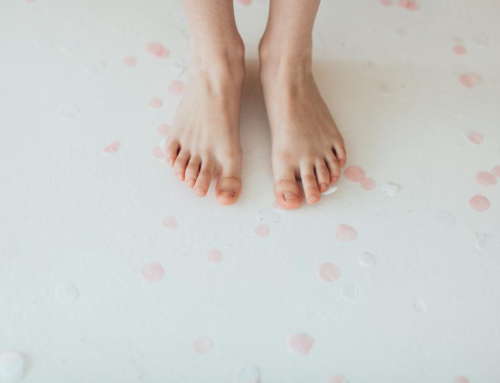Bleach is not safe to use on skin. Using bleach for anything other than what the bottle recommends it for is never a good idea. Bleach is not intended to be used on the skin. Putting it into contact with your body (whether internally or externally) can lead to bodily damage. This is one reason to not trust all sources you find on the internet. Make sure to do proper research when reading internet articles. Some blogs actually recommend using bleach to eliminate toenail fungus!
Using bleach is not safe, and will not cure your condition. In fact, you will be hard-pressed to find a foot doctor who will recommend using bleach on your toenails. The internet’s suggestion to use bleach on toenail fungus is a bad idea for multiple documented reasons. Bleach is one chemical that can cause severe chemical burns. This is definitely a risk when trying to use it on toenail fungus.
Harmful effects
Topical bleach is not safe and putting it on toenails can cause chemical burns. This develops when chemicals come into contact with the skin. Applying bleach to any area of the body will cause a chemical burn. This is one of the most common ways bleach will cause damage. When corrosive chemicals come into contact with the skin, they will corrode the skin to results in a chemical burn. Bleach is definitely corrosive. It is a cleaning product that was not designed for use on the human body. Bleach is not safe for the skin but its a good cleaning product because it is so harsh. This makes it able to effectively dissolve grime and buildup on the durable surfaces it is meant to clean.
The pH of bleach is very high, which is in stark contrast to the neutral pH of the skin. It is 14, the top of the pH scale. The pH of the skin is much closer to 7, which is a neutral pH. The difference in pH is where the problem lies. When bleach is applied to the skin since it is so much more basic it will cause disruptions. The body and skin have a natural pH equilibrium that it maintains in a balance. When this pH balance is disrupted, it can be very damaging to the body. Bleach therefore can cause harmful damage to the body.
How dangerous can chemical burns be?
Varying degrees of damage and chemical burns will result from putting bleach on the skin. One major reason a chemical burn from bleach will be more severe is the time bleach is on the skin. If your skin comes into contact with bleach, rinse it off completely and thoroughly as soon as possible to minimize contact time. Do the first rinse with a stream of running room temperature water. Then rinse the area for at least 5 minutes additionally. After rinsing for this length of time, you should wash the area with soap as well to remove any last traces of the harmful chemical.
What should you do after bleach made contact with your skin?
If you have come into contact with bleach, whether by purpose or fault, you will need to immediately assess the harm. After you remove the bleach from your skin by rinsing and washing it, assess how the skin looks. If it is mildly irritated and not in pain, you can wait and see if the condition improves without medical attention. Serious chemical burns include pain/redness that doesn’t qualify as mild but may also involve blistering. It may also include pus formation, throbbing pain, emanating red streaks from the original source of the burn. If you have pain, irritation, or any of these other symptoms, your skin will need to be evaluated by a doctor immediately.
Longterm effects
By using bleach on your toenails, you are setting yourself up for needing medical attention later on. Treating a chemical burn often involves intensive medical treatments like IV fluids, antibiotics, physical therapy, and cosmetic surgery. Avoiding chemical burns in the first place is the best option to avoid needing these medical treatments. To do this, don’t put any bleach on your skin at all. While it is understandable that you may be frustrated with treating your toenail fungus, bleach should not even be a last resort measure. Bleach hasn’t shown promise with treating fungus clinically, so you will be harming yourself without doing any good for the fungus condition.
While a majority of FDA-approved treatments available for toenail fungus lack effectiveness or pose risks of danger, there are some options available that are effective and safe. If you have a toenail fungus, you should be able to receive appropriate, effective, and safe treatment for it so that you can be cured without putting your body at risk. The PinPointe Laser is an FDA-approved treatment for the fungus that only requires one session to eliminate fungus. To learn more about the toenail fungus laser technology and schedule a free consultation with one of our podiatrists, visit our website. We currently have over 150 locations nationwide so you may easily find an office near you.




